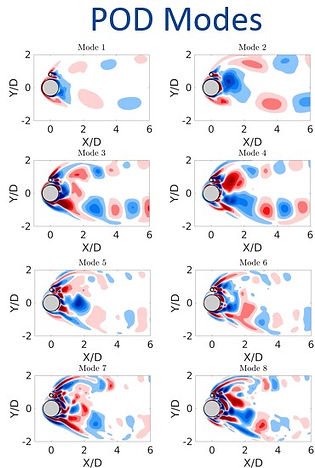
Research Gallery
My current research focuses on hydrodynamic analysis on offshore and subsea structures using Computational Fluid Dynamics (CFD). I am particular interested in using various analysis tools to reveal complex flow dynamics, to uncover correlations between flow coherent structures and their induced hydrodynamic loads on structures and to employ modern machine learning methods for achieving efficient predictions.
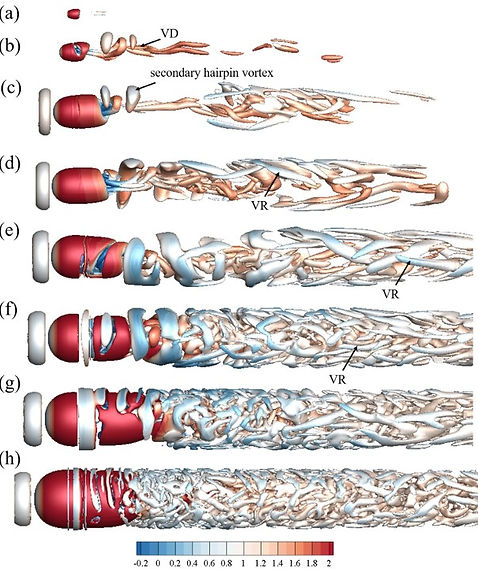
Flow around a Sphere inside a Pipe
Flow around sphere is a classic bluff body flow problem which has been investigated for a long time. The wake flows under different Re are extensively investigated. We have explored an interesting configuration where flow around a stationary sphere in a pipe is investigated. Seven sphere diameters d= 0.1D~0.9D (D is the diameter of the pipe) are chosen to study the effects of the blockage ratio on the flow characteristics.
Three-dimensional Wake Flow behind a Normal Flat Plate
Cylindrical structures with a infinite long span in industries are considered as nominally two-dimensional. To quickly obtain the hydrodynamic loads, 2D flow simulations are usually performed. However, for a normal flat plate, 3D effects become significant and we cannot use 2D simulations to accurately predict the forces. We systematically uncover the correlations between the 3D wake flow structures with the drag forces. It is found that the three-dimensionality characterized by streamwise vortical ribs becomes obvious at Re=200. The relative difference of the predicted drag coefficients between 2D and 3D simulations can be up to 77%.

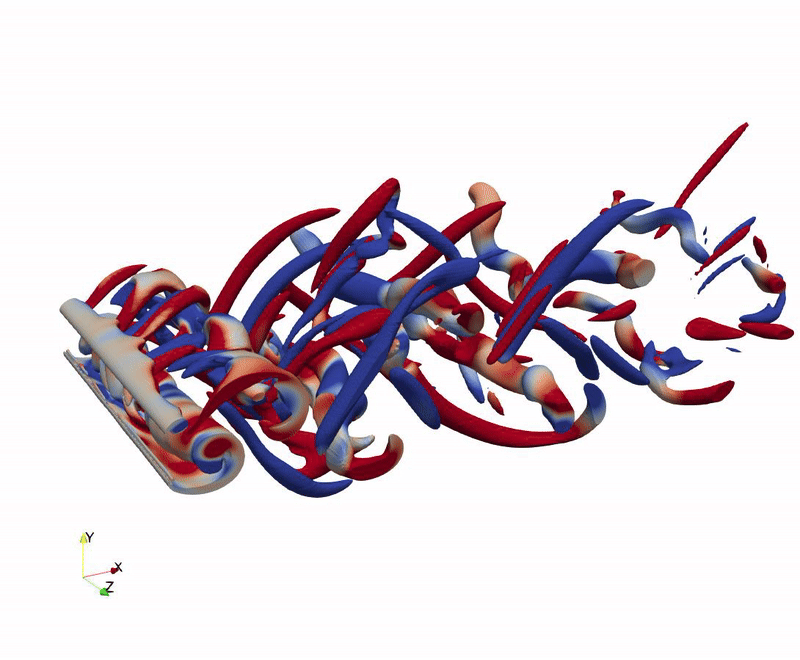
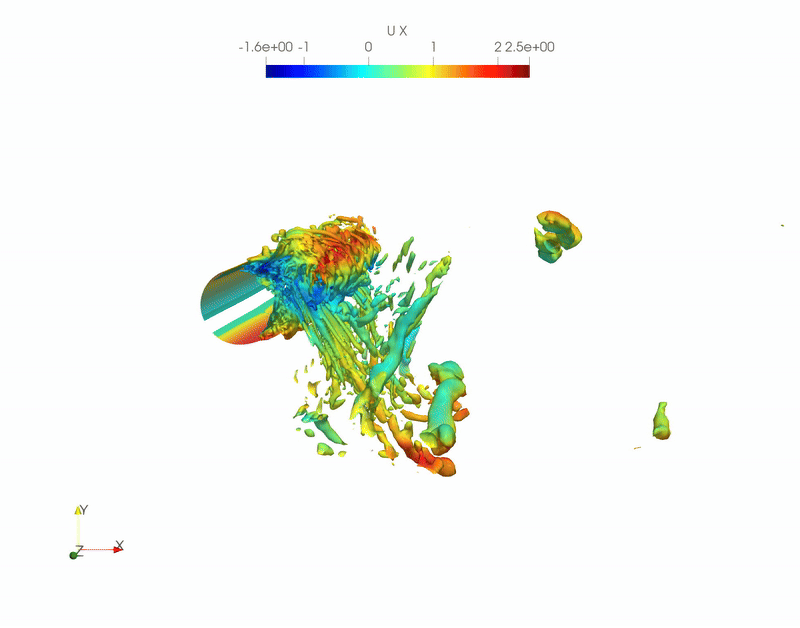
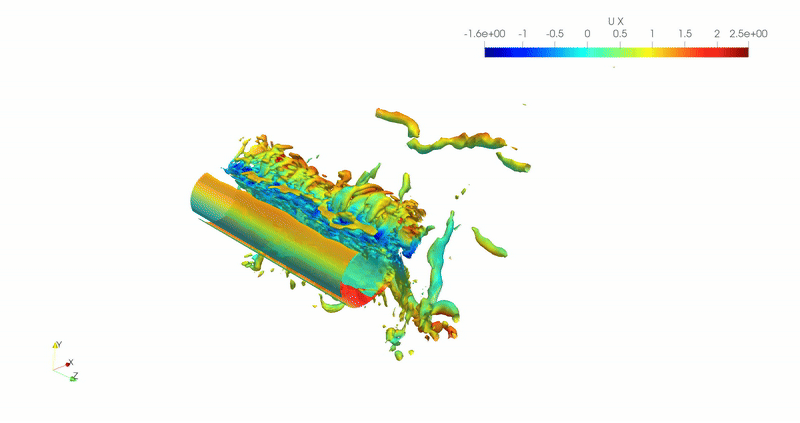
Large Eddy Simulations of Flow past a Cylinder subject to Flow-induced Vibration (FIV
Large eddy simulations (LES) are carried out to investigate the flow around a vibrating cylinder in the subcritical Reynolds number regime at Re=3900. Three reduced velocities of 3, 5, and 7 are chosen to investigate the wake structures in different branches of a vortex-induced vibration (VIV) lock-in. The instantaneous vortical structures are identified to show different coherent flow structures in the wake behind the vibrating cylinder for various branches of VIV lock-in.
Wake Flow behind a Rotational Sphere inside a Pipe Flow
Direct numerical simulations are performed to investigate the flow past a transversely rotating sphere confined in a pipe. It is of great interest to investigate a rotating sphere confined in a pipe where there are complex interactions between the wake flow and the pipe wall. The effects of blockage ratios (BRs) on the forces on the rotating sphere should be focused on. In the present study, numerical simulations are performed to investigate the flow characters behind a transversely rotating sphere inside a laminar pipe flow.
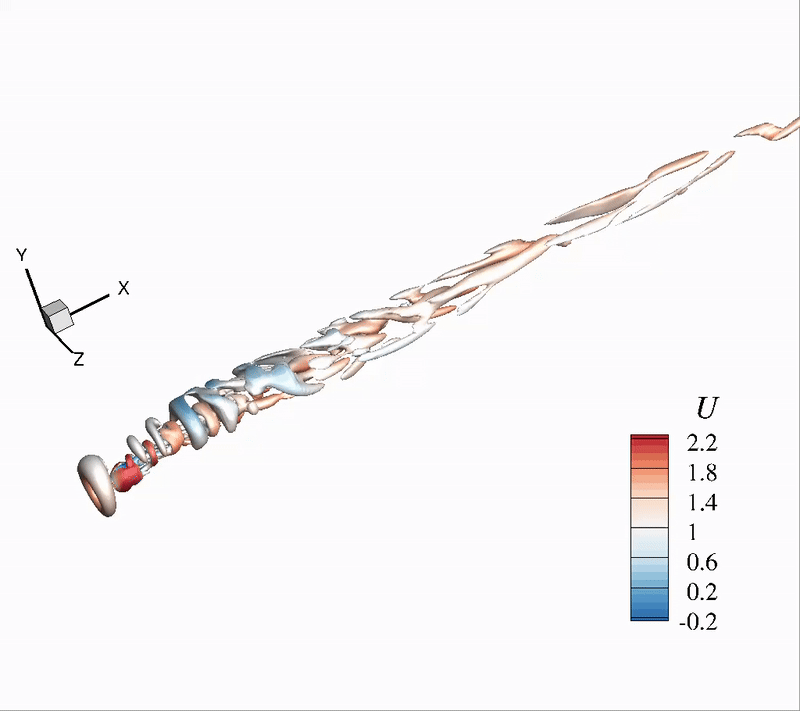
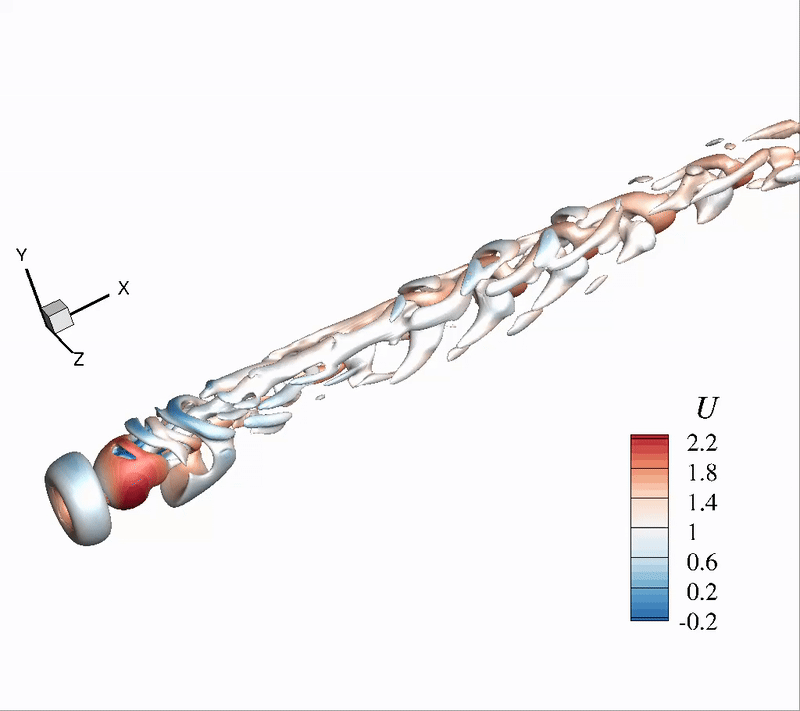
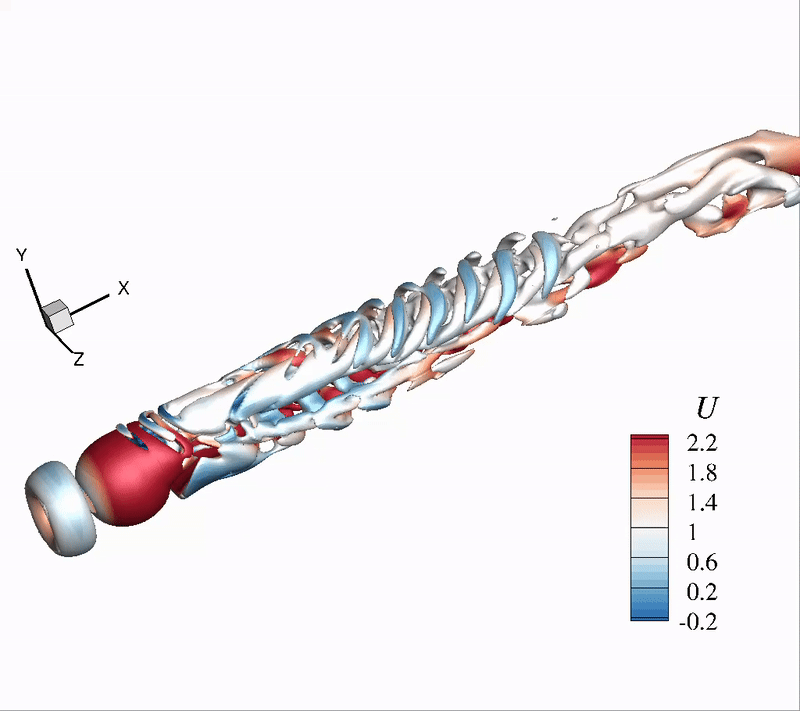
Modal Analysis of Vortex Shedding and Vortex Induced Vibration
The dynamic mode decomposition (DMD) and proper orthogonal decomposition (POD) are used to analyze the coherent structures of turbulent flow around vibrating isolated and piggyback cylinders configurations subjected to a uniform flow at a laminar Reynolds number (Re=200) and an upper transition Reynolds number (Re=3.6 × 106). The wake flows behind the cylinders are decomposed into energy optimal modes (POD modes) and dynamical relevant modes (DMD modes). A reduced-order model (ROM) for the flow is built based on the modal analysis. A comparison of POD and DMD is performed to characterize their special features. For the stationary piggyback configuration, the gap flow between the cylinders appears to be a dominant flow feature as evidenced by the leading DMD modes. The cylinder vibration increases significantly number of modes necessary to obtain a ROM at the given level of accuracy compared to respective stationary configurations
